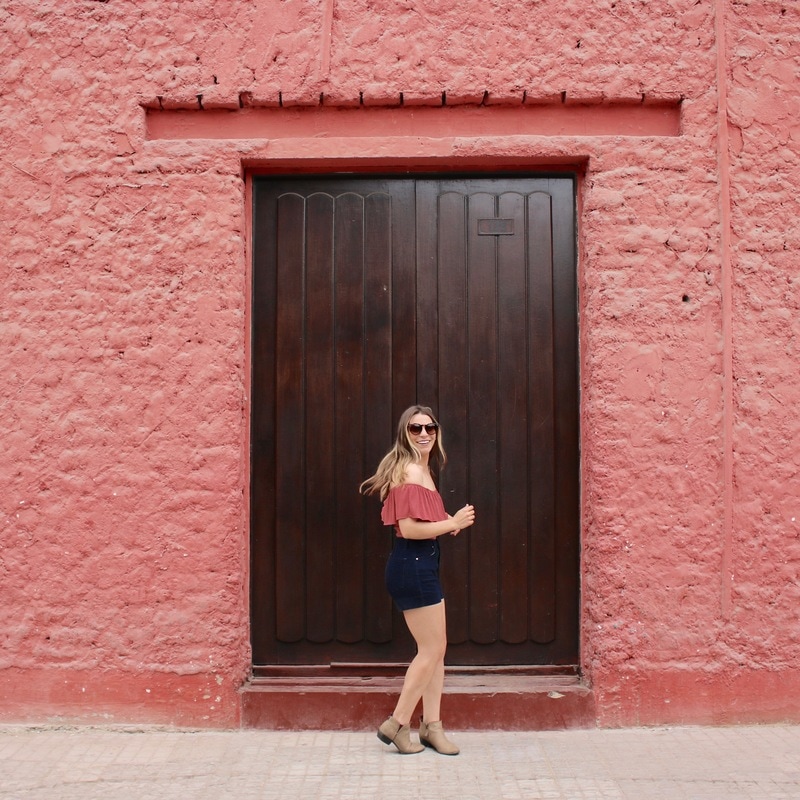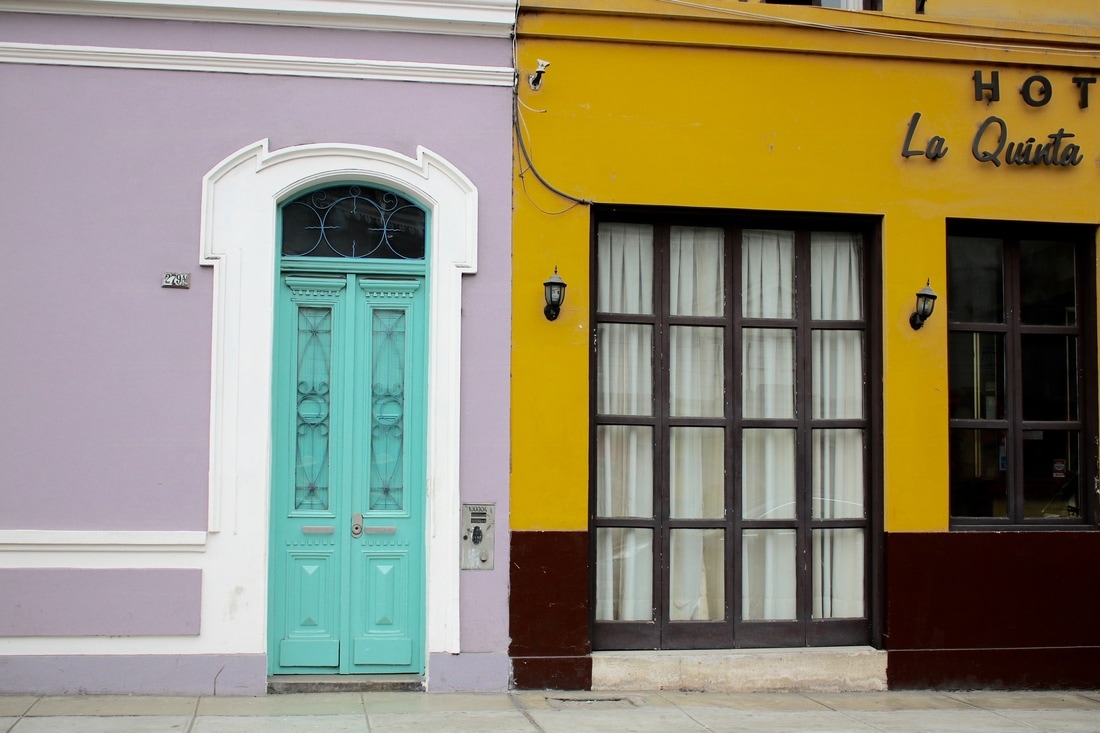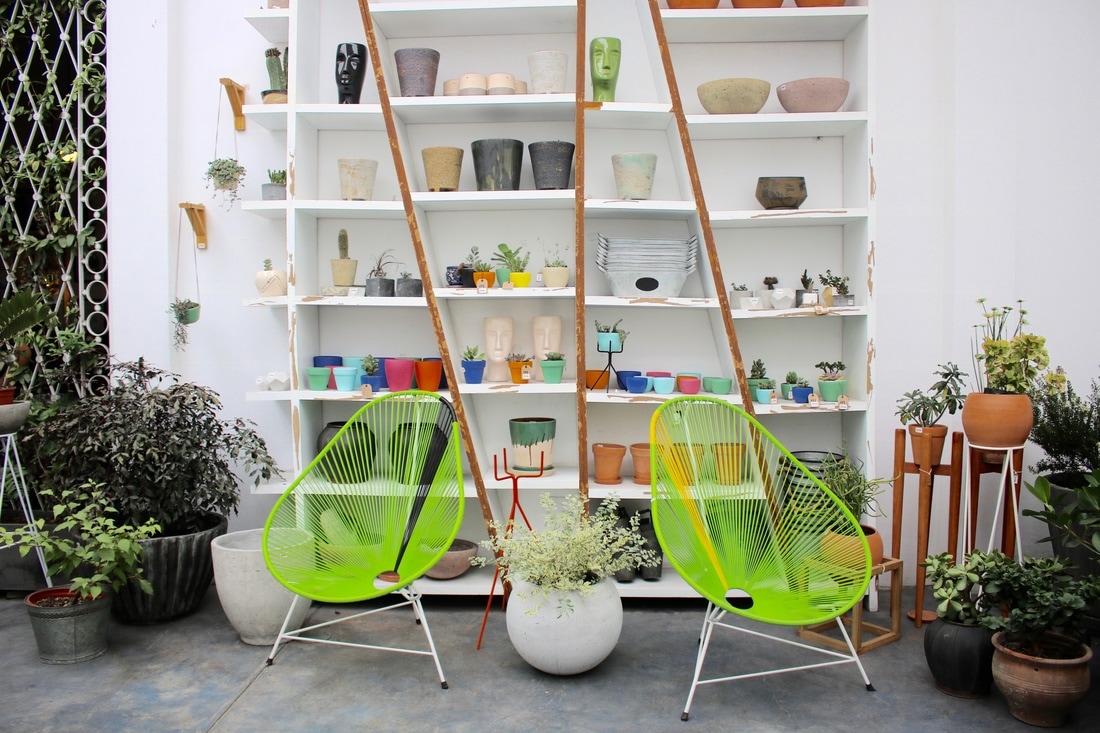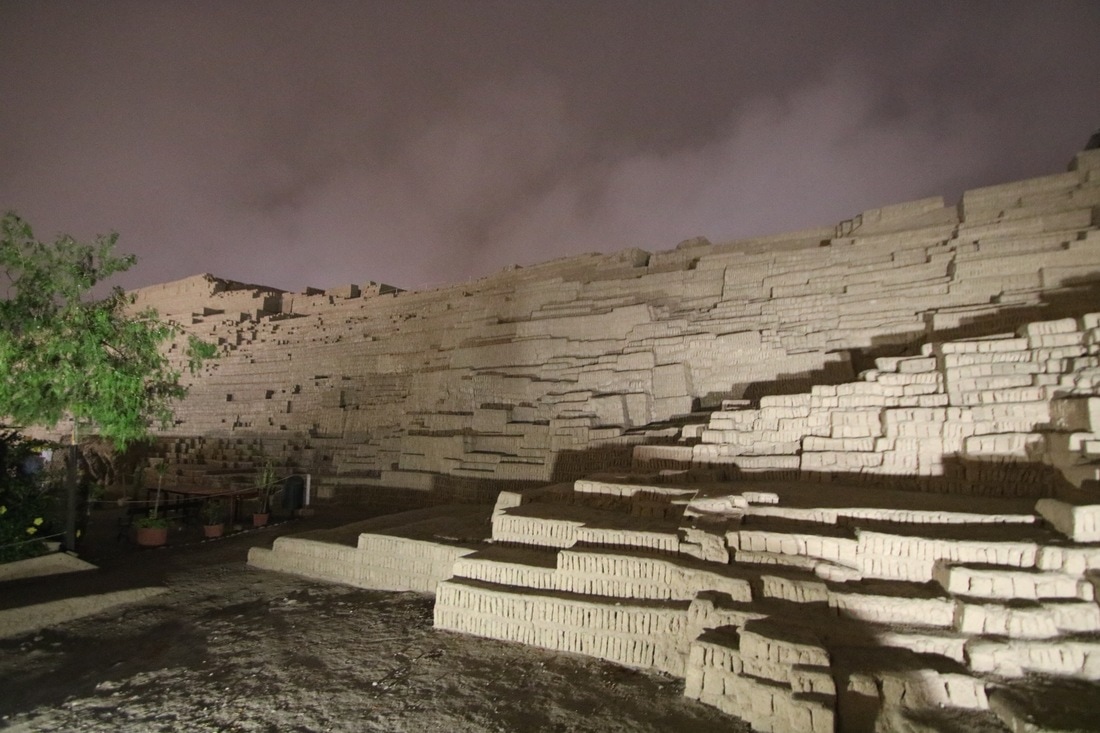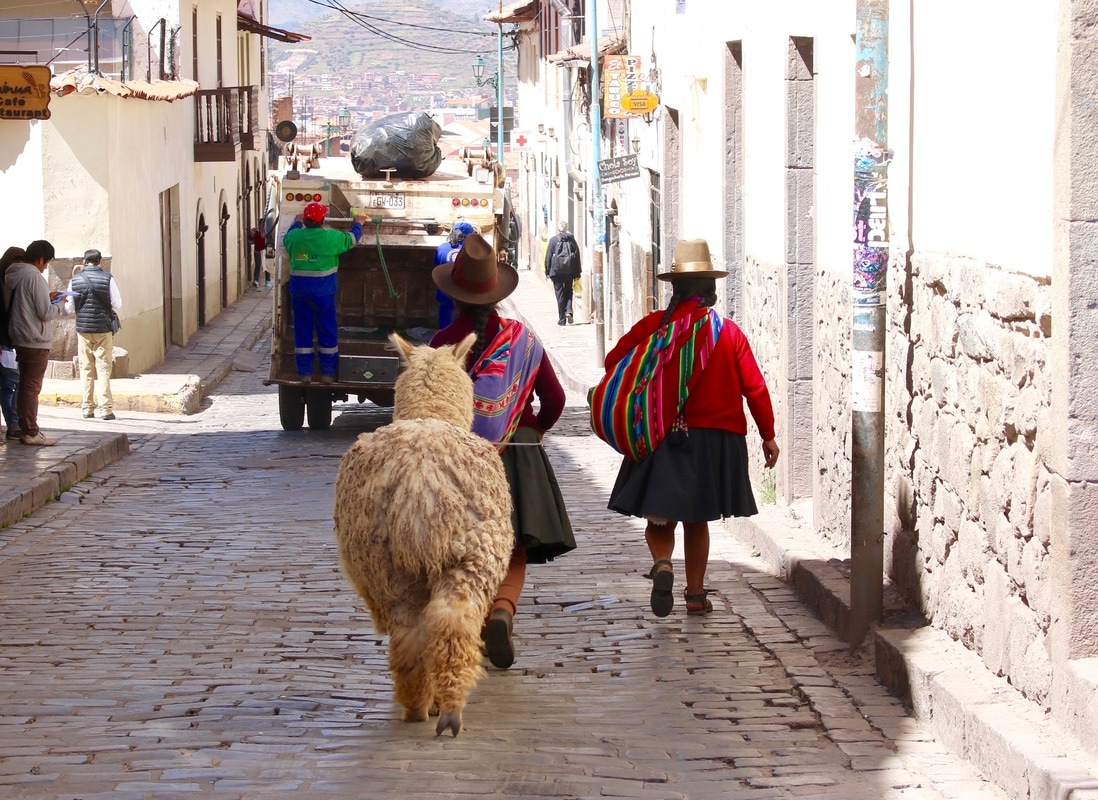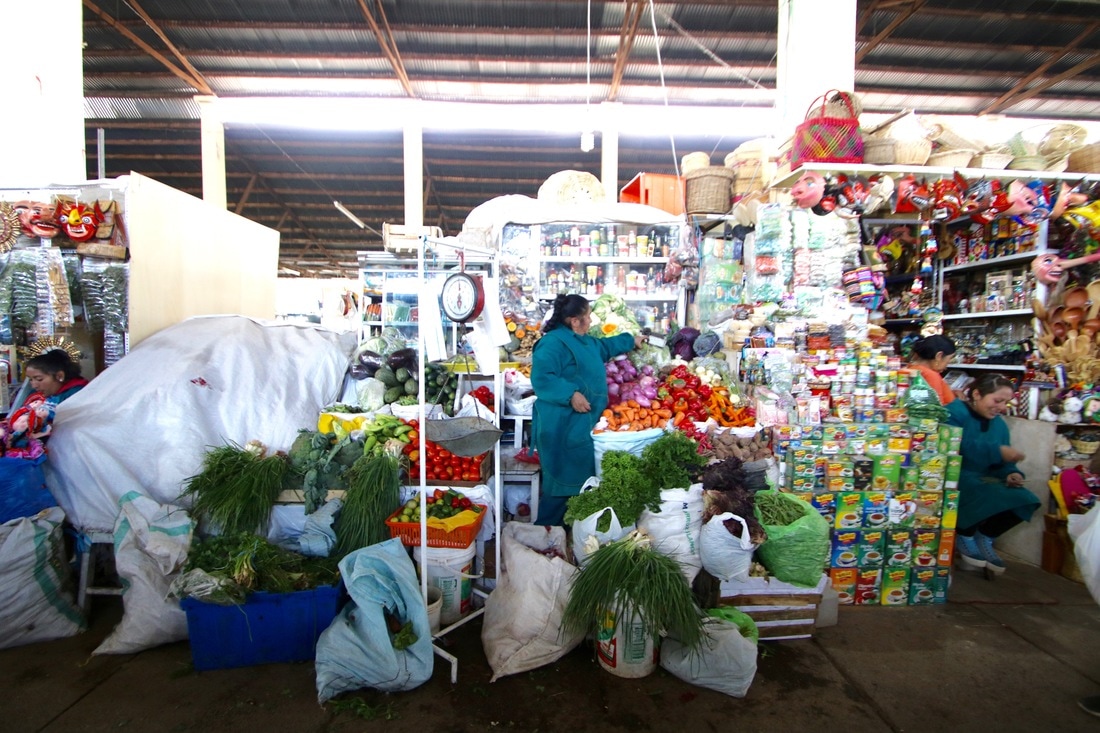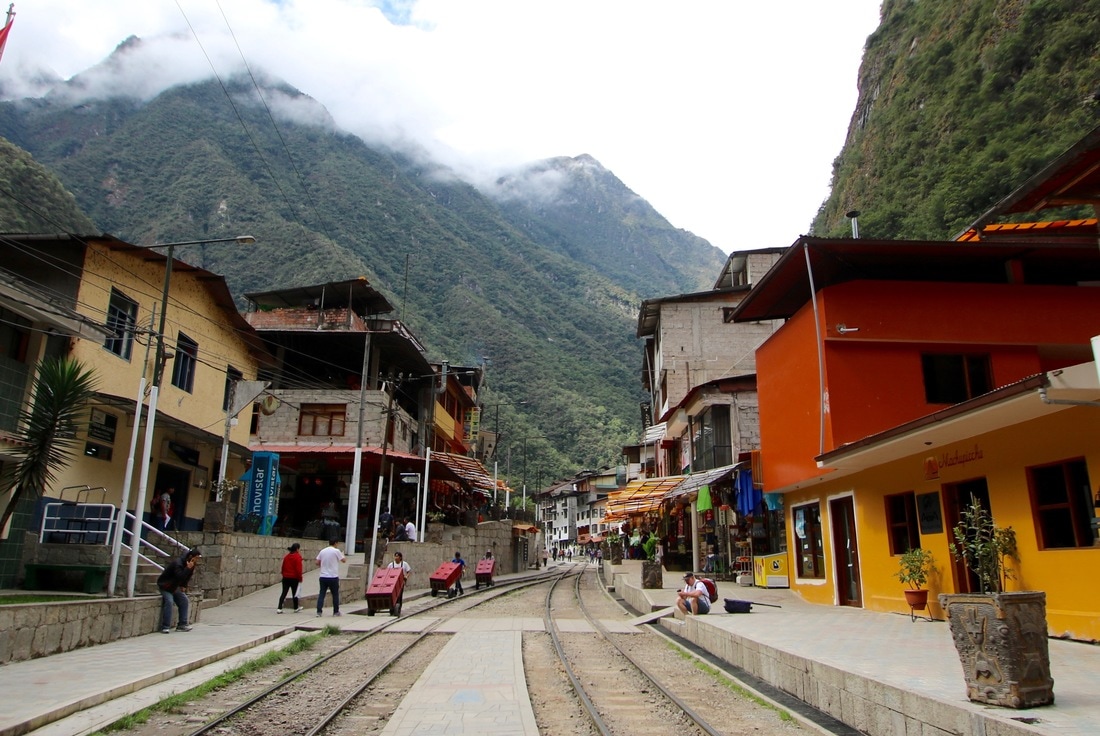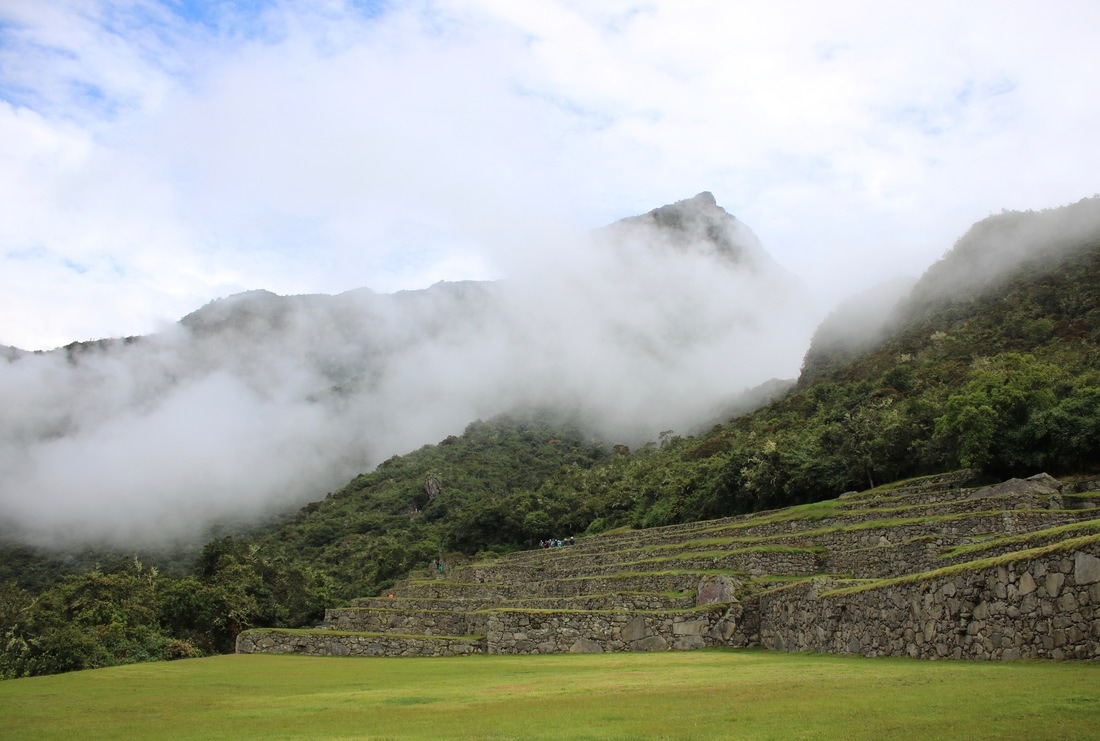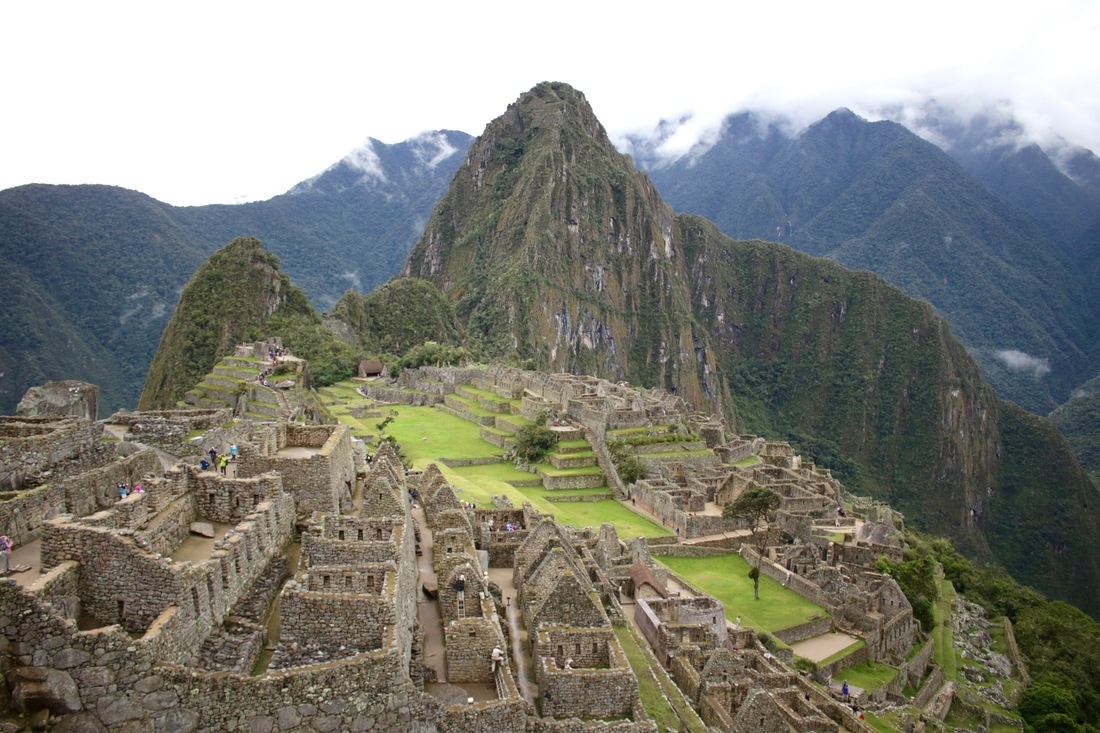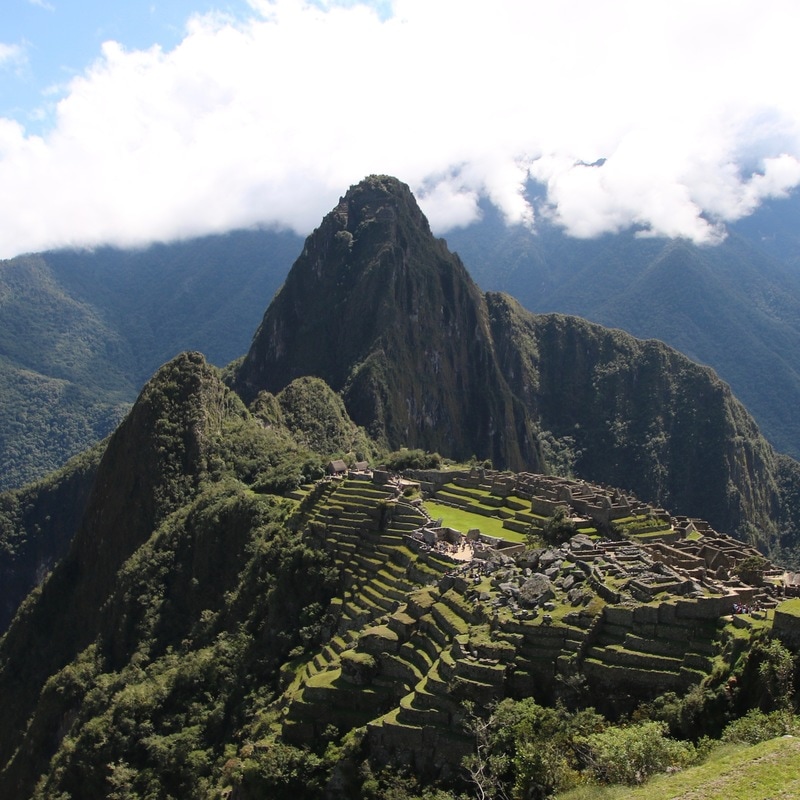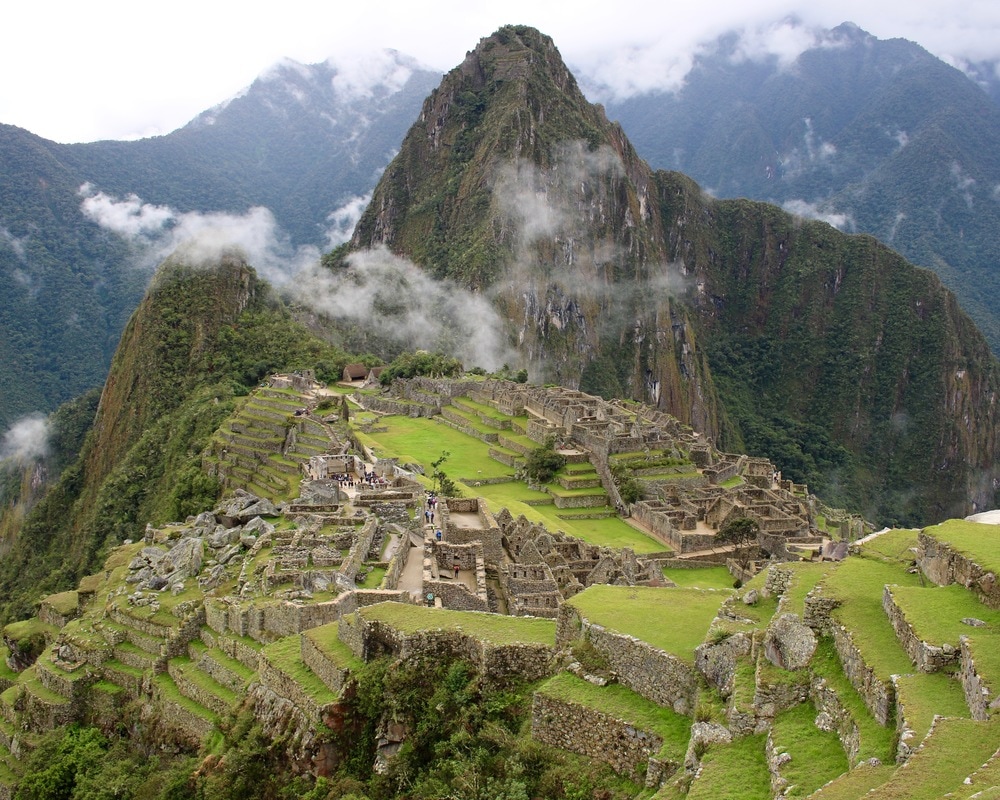|
Peru was the 13th country I have visited, and the first country that I've been to in South America. Overall, it was a magical, surreal, overwhelming, inspiring, fun, and incredibly memorable experience. The food, the people (and the sweet and furry alpacas!), each special place we visited, the history, the art, the music, the culture, and the architecture - ahhhh...I truly have so many amazing memories from this one-of-a-kind country! This was my most memorable Getaway from LA to date, and I had so much fun composing this blog post and choosing which pictures to share on social media (not an easy task, I might add, since everything was so beautiful). But, although there were many beautiful and picturesque moments (much, much more to come below!) - there were also some more unfortunate ones... Let me get the icky stuff out of the way first here -- When traveling to Cusco (the second city we visited - more on this later), I experienced a nauseating mix of altitude sickness (Cusco is at almost 12,000 ft. elevation, and altitude sickness typically effects people starting at about 9,000 ft.) and food poisoning/a bad stomach bug. Later in the trip, I had a bad (and apparently, very rare) reaction to the altitude medication and woke up one morning unable to see anything clearly - it was like I was underwater and my eyes were unable to focus on anything. It was terrifying! I ended up going to a hospital in Cusco, and they couldn't find anything wrong with me (my very blurry vision was my only symptom, and it was bizarre since I have almost 20/20 vision normally). I then took an "ambulance" (more of a transportation van) from the hospital to an eye specialist who said my vision was fine but that I was having a reaction to the medicine I was taking and to stop taking it immediately. It took me about 48 hours to get the majority of my vision back, and about a full week to recover completely. I am so thankful that it wasn't more serious and that I was able to make a full recovery. I will truly never take my eyesight for granted! An interesting side note: my total health fees were about $130 US. It definitely makes you think about healthcare in the US vs. healthcare in other countries... Anyways, throughout this blog post I'll be sharing plenty of travel tips, background information & history, and many pictures from the three incredible places I visited in Peru: Lima, Cusco, and Aguascalientes/Machu Picchu. If you have any questions about any of the information in this Getaway from LA travel guide, feel free to comment on this blog post and I'll make sure to respond to you! Lima, founded in 1535 by Spanish conquistador Francisco Pizarro, is the capitol and the largest city in Peru. Many folks agree that Lima is one of the most interesting cities to visit in South America, and it's rich in agriculture, architecture, history, and culture. While Lima was officially founded in 1535, the first inhabitants settled here roughly 10,000 years ago and were fishermen and hunter and gatherers. Today, the most commonly spoken language in Lima (and most of Peru) is Spanish (83.9% of the population), followed by Quechua (13.2%) and Aymara (1.8%) - both indigenous languages. Lima is located in the central coastal part of the country of Peru, on the edge of the Pacific Ocean. Lima has a population of almost 9 million, making it the third-most-populated city in the Americas. The weather here is just about perfect - warm, comfortable, and dry throughout the year - and it's actually one of the driest capitol cities in the world. Now that you've gotten a quick glimpse into the history and current conditions of Lima, below you will find an overview of the "must see" areas in this sprawling city. The Miraflores neighborhood and beach is one of the first things you'll want to check out when you are visiting Lima. It's one of Lima's nicest "suburbs" and has a lot to offer both visitors and locals alike. Here you will want to kick back and relax, go shopping, people watch, hit the beach, and of course - eat delicious foods and have a cocktail or two (the Pisco Sour is "Peru's drink" - you'll be able to get them just about everywhere!). Right next to the area of Miraflores is the beautiful Barranco neighborhood. Barranco in Lima reminded me of Los Angeles's Arts District or New York's SoHo neighborhood. It's colorful, eclectic, edgy, and artsy, and it's no surprise to me that it's dubbed Lima's "hippest neighborhood." It's full of coffee shops, art galleries and museums, historic buildings, and delicious, locally-owned restaurants. All of the buildings in Barranco were once colonial mansions of Lima's most elite residents. The streets are FULL of incredible street art - colorful murals and detailed paintings - and brightly colored buildings line its cobble-stoned streets. You'll want to have your camera ready at each and every turn in this neighborhood. The Plaza Mayor, or Plaza de Armas, is the birthplace of the city of Lima, as well as the core of the city. This is located in the well-known and heavily-visited Historic District, which is home to the beautiful Cathedral De Lima and Basilica De San Fransisco. The Playa de Armas is the most visited location in all of Lima. This buildings that line this beautiful plaza were built in the 17th century and have been the backdrop of many of Lima's most historical moments. The Historic District has survived a few massive earthquakes, and even with the challenges the city has been through, city officials in Lima have done a fantastic job at preserving the culture, beauty, and architecture of this historic area. UNESCO even declared the Historic Center of Lima as a "World Heritage Site" a few years ago! The architecture is absolutely gorgeous and picturesque - and there is so much to beauty to see and history to experience in this must-visit area of Lima. Huaca Pucllana was built in 5th century Lima out of many, small adobe bricks. This was built to be both an administrative (trade, activities, political and community matters), and ceremonial (religious expression and religious ceremonies) center for the inhabitants of Lima. There were also many houses built in this archaeological complex, and modern archaeologists have discovered many remains of life here - from textiles, ceramics, bones, mummies, tools, weapons, and more - which help historians study what daily life of the inhabitants may have been like all of those many years ago. Today this is one of the most significant ancient monuments in Lima. You can take a tour of the ruins during the day or at night, or you can dine at the restaurant here (what we did), and walk around a bit afterward/stop into the small museum on-site. The restaurant is absolutely delicious (they serve all local products and very tasty Peruvian specialty dishes) and the ruin views from your dinner table are simply unbeatable. For more information about the restaurant looking over the ruins at Huaca Pucllana and to make a reservation, visit this website: http://www.resthuacapucllana.com/en/ For more information about booking a tour here, visit this website: http://huacapucllanamiraflores.pe/ We stayed at the Arawi Lima Miraflores Hotel. For more information about this hotel, visit: https://www.tripadvisor.com/Hotel_Review-g294316-d3418235-Reviews-Arawi_Lima_Miraflores_Hotel-Lima_Lima_Region.html To fly from Lima to Cusco, we booked a flight on Peruvian Airlines. It was only about an hour flight, and the views from the plane windows were gorgeous. Cusco (sometimes spelled Cuzco) is a 1-hour flight from the capital city of Peru, Lima. It's located in the midst of the Andes Mountain in the south of Peru and has a striking altitude of 11,152 feet above sea level. Altitude sickness generally starts affecting people at 8,000 feet or higher, so I'd recommend going to your doctor and discuss whether to get altitude sickness meds before you go - but be careful, and read my story above (beginning of this blog post) on my reaction from Diamox. You can also rely on coco tea and coco candies when you arrive in Cusco to help you acclimate - which many people do, including my whole family - but I'd discuss this with a medical expert before you go. Cusco is today known for its Spanish colonial architecture and Inca archaeological remains, but it was once the capital of the Inca Empire under the ruler Pachacutec. The Spaniards conquered the city in the 16th century and built churches and palaces all over most of the Inca ruins here (although you can still experience the original ruins in the following areas: Choquequirao, Saysayhuamán, Kenko, Tambomachay, Ollantaytambo and Machu Picchu). It is very-well known by visitors and tourists as being the gateway city to the infamous Macchu Pichu (although you still have to take a 4-hour train ride there from Cusco), and you should plan for a full few days here to be able to acclimate to the high altitude and explore some of the most note-worthy sights. The city of Cusco was so different than the capitol city of Lima. Instead of large crowds, horns honking, dense traffic, and large buildings of vibrant colors, Cusco had quiet cobblestone streets, adorable alleyways, and constant alpaca-crossings. It's an incredibly breath-taking city - with its stunning architecture, special hidden gems, and breath-taking views. Cusco's Inca and Spanish culture and history lives in each and every nook and cranny of the city, and it truly has a magical, small-town feel to it all. Cusco's main square - Plaza de Armas - is the center of the city of Cusco. It's a bustling square full of both locals and visitors paying a visit to the historic buildings, dining at restaurants, perusing shops, grabbing drinks at local coffee shops and bars, people watching, and more. Most of the big events and festivals that take place in Cusco are located in the Plaza de Armas. The square is full of gorgeous Spanish-style architecture, with bits and pieces of Inca designs still standing from before the city was conquered. I would highly recommend taking the 15 minute taxi ride from the city center up to Cristo Blanco de Sacsayhuaman. Cristo Blanco (which translates to "white Christ") is a large, white statue of Jesus Christ and can be seen from almost any point in Cusco. The statue closely resembles Rio de Janeiro's Christ the Redeemer statue, but is a much smaller version. The statue lights up brightly at night, and we had a beautiful view of it from our hotel, Rumi Punku. When you visit Cristo Blanco, you will also be greeted with breath-taking 360 degree views of Cusco - this is definitely the best view in the city! Each day, the clouds in Cusco were large and fluffy, which made for a beautiful backdrop as they floated gently above the Andes Mountains. Just a 10 minute walk from Cristo Blanco is the Inca archaeological site of Saqsayhuman. I was too tired/naseaus from the high altitude to make the walk over there, but some of my family members were able to visit, and they really enjoyed exploring the ruins (even though it started pouring rain on them!). Saqsayhuman covers 400 square meters and features impressive stonework from when the Inca's inhabited this area, before they were conquered by the Spanish. I'd recommend you check out both of these impressive sights, since they are so close together, and it's an easy 10-15 minute taxi ride here from the city center of Cusco. The San Pedro Market is just a short walk from the main square/Plaza de Armas. This is a very large, traditional Peruvian marketplace with many items for both locals and visitors to purchase. You can find everything here from fresh juice, vegetables, fruit, grains, meat, tapestries, linens, dolls, jewelry, scarves, purses, knick-knacks of all types, and so much more! During our first few days in Cusco, we stayed at the beautiful Hotel Rumi Punku. For more information on this hotel, visit: www.tripadvisor.com/Hotel_Review-g294314-d318593-Reviews-Hotel_Rumi_Punku-Cusco_Cusco_Region.html When we returned to Cusco after visiting Machu Picchu, we stayed at the Ninos Hotel Meloc (pictured above). This is an incredibly special hotel because all profits from the rooms, food (which was some of the most delicious we had in Cusco), and the gift shop, benefit local children in great need. Their website shares, "By choosing Niños Hotel for your accommodation in Cusco, you support the Niños Unidos Peruanos Foundation, as your support helps provide, for 600 underprivileged children of Cusco and in other villages, one to two healthy meals a day, medical and dental care, homework support, and a pleasant, caring environment in which not only to fulfill basic needs such as a shower, but a place to express their creativity." For more information about this hotel, visit: https://www.tripadvisor.com/Hotel_Review-g294314-d316205-Reviews-Ninos_Hotel_Meloc-Cusco_Cusco_Region.html To get from Cusco to Aguascalientes/Machu Picchu, we took a 4-hour train ride (this is the easiest way to get there - or it's a 3 day bus ride from Lima - yikes!). The train rides both there and back were absolutely lovely, enjoyable, and even relaxing! For more information about booking your train ride from Cusco to Aguascalientes and back, visit either of these two websites: http://www.perurail.com/ or http://incarail.com/ And, now... the moment I was most excited for when visiting Peru: visiting the infamous Inca archaeological site of Machu Picchu! As I explained previously, to get to Machu Picchu, we took a 4-hour train ride from Cusco to Aguascalientes. Aguascalientes & Machu Picchu are at an altitude of about 8,000 ft., and we were all pretty acclimated to the high altitude thanks to our few days spent in Cusco, so this part of the trip I felt the most well (thank goodness, since I was most excited about this). Aguascalientes is a very small town at the base of Machu Picchu, and this was by far my favorite town that I visited in Peru. Train tracks run down the middle of the town, and the little kids are so brave and carefree here - they play and play until a train comes roaring into town and they run off of the train tracks giggling at the very last second. The town also has a large running river that flows through it, and you can hear the calming sound of rushing water as you walk along the dirt roads and cobblestone alleyways. The families that live here were so warm and welcoming, and each night we were there, the entire community came together in the center of the city to play music, dance, and sing. I was taking cell phone video of teenagers dancing in their traditional Peruvian wear, and one of the young men grabbed my hand and pulled me into the circle to dance! I was trying to keep up with the steps, my heart was racing, and I was smiling bigger than I had all trip - this was a moment I will never forget! This town was nothing short of magical, and it felt like we were on the set of a movie. Aguascalientes is also home to delicious restaurants and a large marketplace to peruse and buy hand-made, local souvenirs from. From Aguascalientes, there are only to ways to enter Machu Picchu: 1) to hike in (it takes about an hour to hike up the many stairs), or 2) take the bus up the steep, winding road. I opted for the bus each day (more details on the bus ride are below in the Travel & Accommodations section). Once you enter the site (you need a ticket for each day you enter - more details below), you will need to walk/climb stairs for about 20 minutes before you reach the base/top of Machu Picchu. The first time I climbed up the stairs and opened my eyes to see Machu Picchu I could almost feel my heart stop. It was emotional, powerful, awe-inspiring... and so much more beautiful in person than in pictures. Even the best pictures do not do Machu Picchu justice, and it is something you physically need to see and experience to believe. Machu Picchu is surrounded 360 degrees by the grandiose Andes Mountains, many of which are covered by thick clouds since they are so tall in height. On our first day here, a thick fog rolled in and out of the surrounding mountains, which made for beautiful pictures. On our second day we had bright, sunny skies, with large clouds lingering in the far away distance. We hired a guide once we were in Machu Picchu on day #2 to show us around the Inca ruins and explain Machu Picchu's fascinating history to us (I would highly recommend everyone to go on a tour here - it does not take long and there is no better way to learn about the site than from someone who knows the history very well). Exploring the Incan ruins, that historians believe date back to roughly 1450 AD, was absolutely incredible. Machu Picchu is believed to have been a royal estate or sacred religious site for elite leaders. Our tour guide shared with us that the Incas built this empire in a very secret location (on the top of a mountain, surrounded by huge cliffs, and with only one main entrance), to impress the gods. The site is made up of more than 150 stone buildings (including residential houses and temples), a farming area, a royal district, and a sacred area. It was fascinating to hear how the Inca’s built this village from the ground up and the challenges they faced while doing so in this location. The site was abandoned in the 16th century, and historians believe it was either due to a smallpox epidemic or due to the Inca's leaving the site on their own from fear of being conquered by the Spanish (who had recently invaded Cusco nearby). American archaeologist Hiram Bingham "rediscovered" Machu Picchu in 1911, although local Peruvian’s already knew about the site and were using it for farming and other purposes. But, when the rest of the world learned about this note-worthy sight due to Bingham’s best-selling book, “The Lost City of the Incas,” tourists began to flock here. Unfortunately, Bingham illegally smuggled many artifacts from Machu Picchu back to Yale University in the United States to study them. This led to a 100-year old legal battle between Peru and the US, until the Peruvian government filed a lawsuit and lobbied President Obama for the return of all of the stolen items. Machu Picchu certainly has an interesting history behind it, and today, hundreds of thousands of travelers pay it a visit. It is no surprise to me that this sight was named one of the New Seven Wonders of the World in 2007 and also a UNESCO World Heritage Site in the 80's. This ancient sight is simply incredible to visit and explore, and I'd recommend everyone to visit at least once in their lifetime if you have the opportunity! We stayed at the lovely Tierra Viva Machu Picchu hotel in Aguascalientes. For more information, visit https://www.tripadvisor.com/Hotel_Review-g304036-d1148615-Reviews-Tierra_Viva_Machu_Picchu-Aguas_Calientes_Sacred_Valley_Cusco_Region.html You will need to purchase a separate ticket for each day that you want to visit Machu Picchu. Visit this link for more information on purchasing your tickets: thriftynomads.com/how-to-buy-machu-picchu-tickets-online/#How_to_buy_Machu_Picchu_tickets_online You will also need to purchase bus tickets for each way (there and back), and you can do this near the main bus stop in Aguascalientes (you can't miss it - the town is very small - and you can easily ask someone if you for any reason can't find it!). The bus ride from Aguascalientes to Machu Picchu is only about 15-20 minutes, but it's on a very windy and steep road, so be ready! Overall, Peru was the most memorable Getaway from LA I've experienced to date! I will cherish the memories I made here for as long as I live. Even with the minor unfortunate moments and being sick a few days during the trip, I am so grateful to have had the experience of visiting and exploring this country, and I can't wait to go back again some day. If you have any questions about my trip to Peru, feel free to comment and I will reply to you. Until my next Getaway from LA - bon voyage and happy exploring, my friends!
2 Comments
|
WANDER BEYOND THE CITY LINES...As much as I love to explore L.A., it's good for the soul to getaway every now & then. Join me as I escape from the city to explore new locations, both locally and globally! LET'S GET AWAY TO:
All
|
- Home
- Start Here: Exploring Los Angeles
-
Getaway from L.A. Trips
- Banff, Canada
- Big Sur, California
- Cancun, Mexico
- Cabo San Lucas, Mexico
- Death Valley National Park
- Great Barrier Reef, Australia
- Hearst Castle
- Joshua Tree National Park, CA
- Maui, Hawaii
- New Orleans, LA
- Peru & Machu Picchu
- Portland, Oregon
- Queenstown, New Zealand
- Sacramento, CA
- San Luis Obispo, CA
- Sydney, Australia
- Temecula, CA
- Valle De Guadalupe, Mexico
- Yellowstone National Park, Wyoming
- Yosemite National Park, CA
- More
COPYRIGHT © 2016 Detour L.A. ALL RIGHTS RESERVED. Unauthorized use and/or duplication of the images on all pages of this website without express and written permission from this site’s author and/or owner is strictly prohibited. Excerpts and links may be used, provided that full and clear credit is given to www.DetourLA.com. Contact for details: jordan_blogger@yahoo.com.
- Home
- Start Here: Exploring Los Angeles
-
Getaway from L.A. Trips
- Banff, Canada
- Big Sur, California
- Cancun, Mexico
- Cabo San Lucas, Mexico
- Death Valley National Park
- Great Barrier Reef, Australia
- Hearst Castle
- Joshua Tree National Park, CA
- Maui, Hawaii
- New Orleans, LA
- Peru & Machu Picchu
- Portland, Oregon
- Queenstown, New Zealand
- Sacramento, CA
- San Luis Obispo, CA
- Sydney, Australia
- Temecula, CA
- Valle De Guadalupe, Mexico
- Yellowstone National Park, Wyoming
- Yosemite National Park, CA
- More


